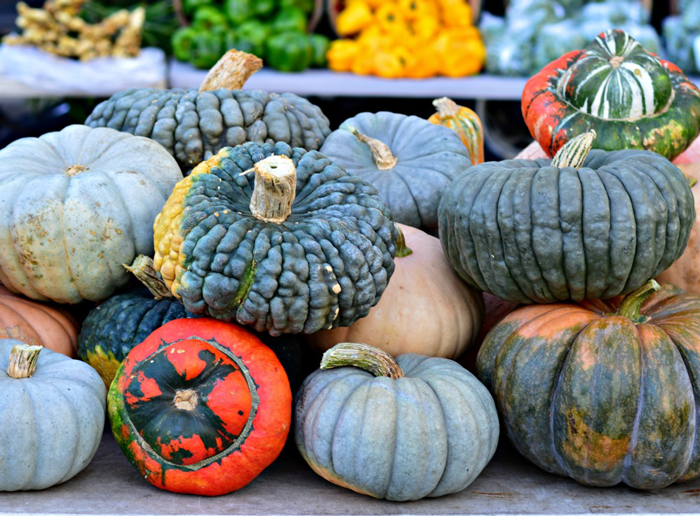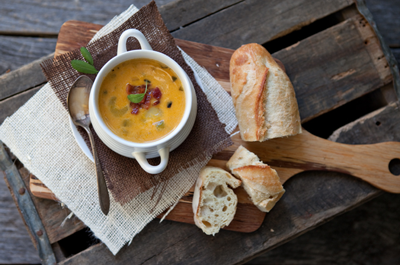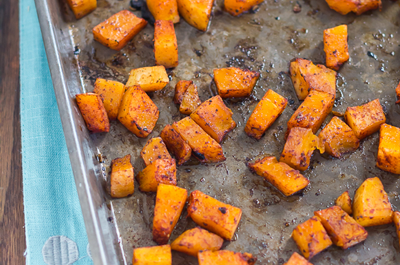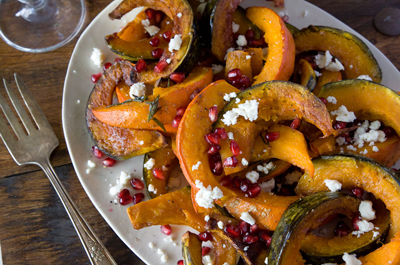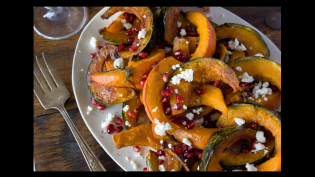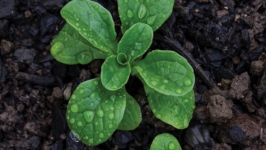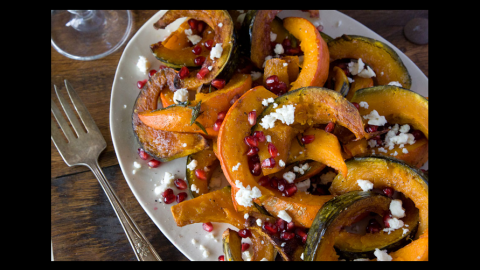Dressing Up Winter Squash
Confession: I loved the idea of winter, or hard, squash, long before I actually ate it. It may come as a shock that I was a picky eater from the time I was an infant up until my early 20s, but my mother assures me that my starch-based diet (approved foods: potatoes, macaroni and cheese, pizza with all toppings and sauce scraped off) was a never-ending source of distress for her.
Apparently I now make up for lost time, given my omnivorous proclivities, but I was still slow to embrace squash. I always loved the appearance of these nutritious gourds—high in iron, riboflavin and vitamins A and C, they’re a far cry from the high-glycemic foods of my youth. And while I’m loathe to see summer end, I love the way winter squash are so emblematic of the season, with their autumnal colors. I particularly gravitate toward varieties with eclectic shapes and textures (Cinderella pumpkins, red kuri) and Pantone-worth hues (Hubbard, pin-striped delicata); even the names have an aesthetic appeal that I find gratifying (sweet dumpling, cheese and sugar pumpkins, buttercup). Note that the standard Halloween pumpkins are meant for carving, not consumption.
My gateway gourd came in the form of a silky butternut squash soup. After that, I began making my own soup, experimenting with different varieties and garnishes (compound butters—maple, pecan, orange, sage—are my favorite). While I have nothing against soup, squash is a versatile fruit (yes, you read that right) that lends itself to all manner of cooking methods and sweet and savory applications.
Given our short growing season, crops that cellar (or refrigerate or closet…wherever you have a cool, dry, dark space) well are part of our agricultural heritage. Come winter, root vegetables like potatoes, onions and beets, pome fruits like apples and pears, and winter squash become staples. The latter last up to a month unrefrigerated when kept under the right conditions, thanks to their thick exteriors (thin-skinned varieties like delicata should be consumed within a week). Winter squash also have value-added benefits in their seeds, which are high in protein and fiber, as well as vitamins and minerals, while the pulp and skin enrich compost.
Winter squash vary in water content and texture—some are stringy and fibrous, others dense and creamy; some have a distinct vegetal flavor while others are sweet. My favorite all-purpose varieties are butternut and acorn; they caramelize well due to their sugar content and are ideal for baking (squash muffins and quick breads are divine and fill your kitchen with the fragrance of fall), roasting, sautéing (I add chunks to stir-fries) and purees (the perfect accompaniment for grilled or roasted pork). I should also add that in my opinion, there’s no food more perfectly suited for use with squash than bacon—cooked together they create alchemy that lures even vegetarians into the kitchen.
My favorite use for squash is in salads. Years ago, a friend made me a dinner of French lentils, cubed squash, feta cheese and arugula, and I still use that dish as inspiration. Try swapping the lentils for quinoa or farro, and add toasted nuts and dried fruit for a less savory take. Squash also takes well to vinaigrettes, but it’s just as delicious with nothing more than a drizzle of extra-virgin olive oil or nut oil and a splash of good-quality vinegar. However you’re eating squash this winter, don’t be afraid to experiment (you can always roast the seeds).
Look for local winter squash in the Aspen area at Roxy’s Market, Whole Foods and Dandelion Co-op.
GET THE RECIPE: WARM SQUASH SALAD WITH CHEVRE, DRIED CHERRIES & PEPITAS


